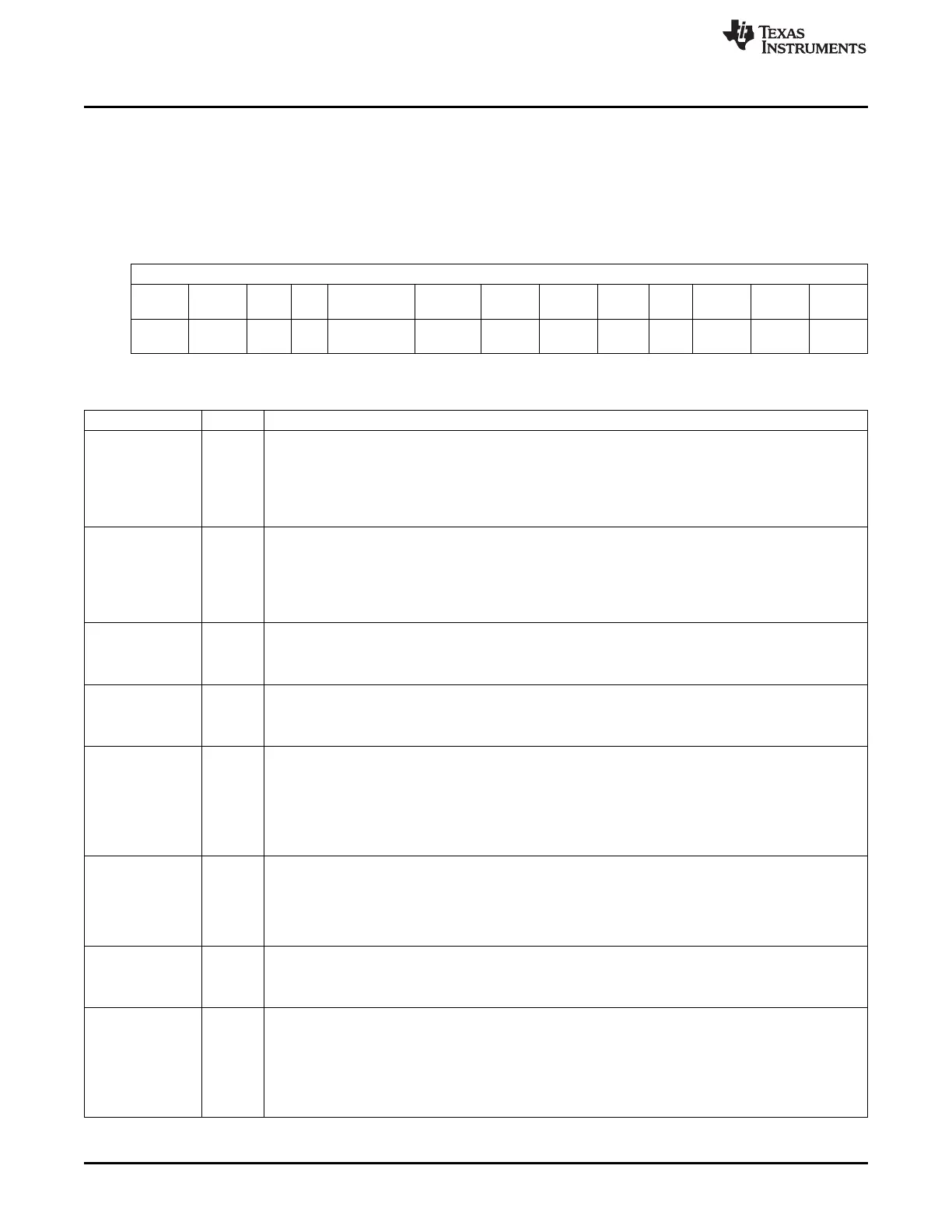Functional Description
www.ti.com
23.3.18.1 Structure of Message Objects
Table 23-8 shows the structure of a message object.
The grayed fields are those parts of the message object which are represented in dedicated registers. For
example, the transmit request flags of all message objects are represented in centralized transmit request
registers.
Table 23-8. Structure of a Message Object
Message Object
Msk[28: MDi
UMask MXtd EoB unused NewDat MsgLst RxIE TxIE IntPnd RmtEn TxRqst
0] r
Data
MsgVal ID[28:0] Xtd Dir DLC[3:0] Data 0 Data 1 Data 2 Data 3 Data 5 Data 6 Data 7
4
Table 23-9. Field Descriptions
Name Value Description
MsgVal Message valid
0 The message object is ignored by the message handler.
1 The message object is to be used by the message handler.
Note: This bit may be kept at level ‘1’ even when the identifier bits ID[28:0], the control bits Xtd, Dir, or the
data length code are changed. It should be reset if the Messages Object is no longer required.
UMask Use acceptance mask
0 Mask bits (Msk[28:0], MXtd and MDir) are ignored and not used for acceptance filtering.
1 Mask bits are used for acceptance filtering.
Note: If the UMask bit is set to one, the message object’s mask bits have to be programmed during
initialization of the message object before MsgVal is set to one.
ID[28:0] Message identifier
ID[28:0] 29-bit (“extended”) identifier bits
ID[28:18] 11-bit (“standard”) identifier bits
Msk[28:0] Identifier mask
0 The corresponding bit in the message identifier is not used for acceptance filtering (don’t care).
1 The corresponding bit in the message identifier is used for acceptance filtering.
Xtd Mask extended identifier
0 The extended identifier bit (IDE) has no effect on the acceptance filtering.
1 The extended identifier bit (IDE) is used for acceptance filtering.
Note: When 11-bit (“standard”) Identifiers are used for a message object, the identifiers of received data
frames are written into bits ID[28:18]. For acceptance filtering, only these bits together with mask bits
Msk[28:18] are considered.
Dir Message direction
0 Direction = receive: On TxRqst, a remote frame with the identifier of this message object is transmitted. On
reception of a data frame with matching identifier, the message is stored in this message object.
1 Direction = transmit: On TxRqst, a data frame is transmitted. On reception of a remote frame with matching
identifier, the TxRqst bit of this message object is set (if RmtEn = one).
MDir Mask message direction
0 The message direction bit (Dir) has no effect on the acceptance filtering.
1 The message direction bit (Dir) is used for acceptance filtering.
EOB End of block
0 The message object is part of a FIFO Buffer block and is not the last message object of this FIFO Buffer
block.
1 The message object is a single message object or the last message object in a FIFO Buffer Block.
Note: This bit is used to concatenate multiple message objects to build a FIFO Buffer. For single message
objects (not belonging to a FIFO Buffer), this bit must always be set to one.
3918
Controller Area Network (CAN) SPRUH73H–October 2011–Revised April 2013
Submit Documentation Feedback
Copyright © 2011–2013, Texas Instruments Incorporated
